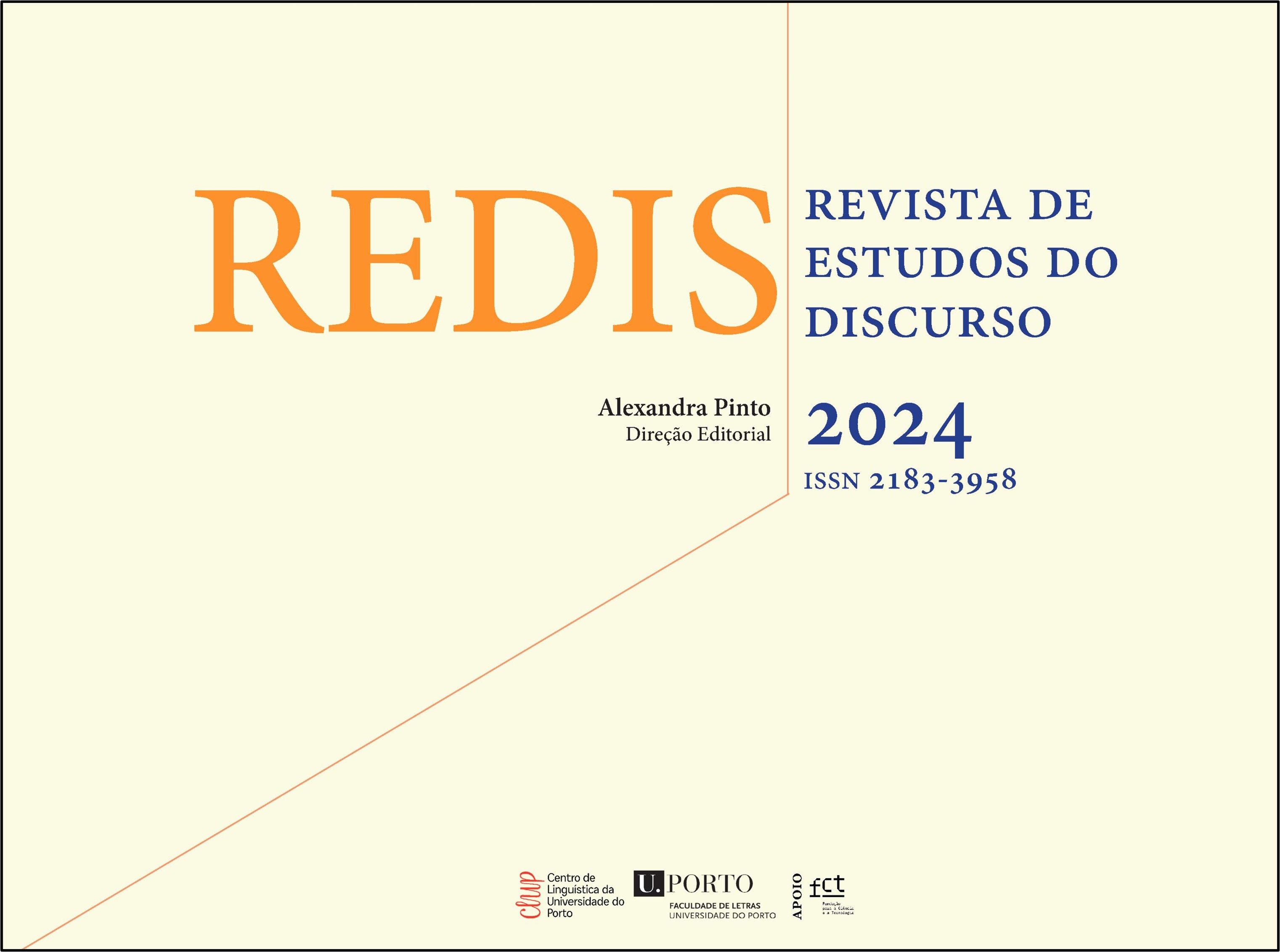TED Talks: Analyzing the Rhetorical Structure of the Genre from the Perspective of Move Theory
DOI:
https://doi.org/10.21747/21833958/red14a5Keywords:
TED talks, Genre Analysis, Move Analysis Theory, Online Discourse, Oral GenresAbstract
This article explores the rhetorical structure of TED Talks, a popular form of online discourse, through a theoretical framework based on Swales' move analysis. Drawing on previous studies and employing a corpus study approach, the article investigates the main moves and rhetorical steps within TED Talks, focusing on their communicative purposes. The results reveal a non-linear organization of rhetorical elements, reflecting the oral nature and adaptability of the genre. It is noteworthy that elements such as audience orientation and speaker presentation show flexibility in their arrangement, emphasizing the speaker's authority and engagement. The recurrent use of exemplification emerges as a significant rhetorical strategy, facilitating the audience's understanding of complex concepts. The study also raises questions about the genre's independence, rhetorical consistency across scientific domains, and communicative goals, suggesting avenues for further research.
References
Biber, D., Connor, U., & Upton, T. A. (2007). Discourse on the move: Using corpus analysis to describe discourse structure. John Benjamins.
Bunton, D. R. (1998). Linguistic and Textual Problems in Ph. D and M. Phil Theses: an analysis of genre moves and metatext. HKU Theses Online (HKUTO).
Bunton, D. (2002). Generic moves in Ph.D. thesis introductions. In J. Flowerdew (Ed.), Academic discourse (pp. 57-75). London: Longman
Caliendo, G. (2014). The Popularization of Science in Web-Based Genres. In G. Bongo, & G. Caliendo (Eds.), The Language of Popularization: Theoretical and Descriptive Models (pp. 101–132). Peter Lang. https://www.researchgate.net/publication/323797232
Chang, Y. J., & Huang, H. T. (2015). Exploring TED talks as a pedagogical resource for oral presentations: A corpus-based move analysis. English Teaching and Learning, 39(4), 29–62. https://doi.org/10.6330/ETL.2015.39.4.02
Connor, U., Upton, T. A., & Kanoksilapatham, B. (2007). Introduction to Move Analysis. In D. Biber, U. Connor, & T. A. Upton (Eds.), Discourse on the move: Using corpus analysis to describe discourse structure (pp. 23–41). John Benjamins.
Kanoksilapatham, B. (2005). Rhetorical structure of biochemistry research articles. English for Specific Purposes, 24(3), 269–292. https://doi.org/https://doi.org/10.1016/j.esp.2004.08.003
Kanoksilapatham, B. (2007). Rhetorical moves in biochemistry research articles. In D. Biber, U. Connor, & T. A. Upton (Eds.), Discourse on the move: Using corpus analysis to describe discourse structure (pp. 73–119). John Benjamins.
Li, X., & Li, F. (2021). Corpus-Based Move Analysis of TED Talks about Education. Creative Education, 12(01), 166–175. https://doi.org/10.4236/ce.2021.121012
Ludewig, J. (2017). TED talks as an emergent genre. CLCWeb - Comparative Literature and Culture, 19(1). https://doi.org/10.7771/1481-4374.2946
Miranda, J. A., (2018). TED Talks: a genre analysis. [Master's Thesis, University of Santa Catarina]. Repositório Institucional UFCS. https://repositorio.ufsc.br/handle/123456789/191173?show=full
Miranda, J. A., & Moritz, M. E. W. (2021). TED Talks: A Genre Analysis. Revista X, 16(6), 1552–1573. https://orcid.org/0000-0002-0057-1685
Meurer, J-L. (2002). Genre as diversity, and rhetorical mode as unity in language use. Ilha do Desterro, (43), 61-82.
Swales, J. M. (1990). Genre Analysis: English in Academic and Research Settings. Cambridge University Press. https://books.google.pt/books?id=shX_EV1r3-0C
Swales, J. M. (2004). Research Genres: Explorations and Applications. Cambridge University Press. https://doi.org/DOI: 10.1017/CBO9781139524827
Tardy, C. M., & Swales, J. M. (2014). 6. Genre analysis. In K. P. Schneider, & A. Barron (Eds.), Pragmatics of Discourse (pp. 165–188). De Gruyter Mouton. https://doi.org/doi:10.1515/9783110214406-007
Thompson, S. (1994). Frameworks and Contexts: A Genre-Based Approach to Analysing Lecture Introductions. In English for Specific Purposes, 13(2) .
Rowley-Jolivet, E., & Carter-Thomas, S. (2005). The rhetoric of conference presentation introductions: context, argument and interaction. International Journal of Applied Linguistics, 15(1), 45–70. https://doi.org/https://doi.org/10.1111/j.1473-4192.2005.00080.x
Upton, T. A. (2002). Understanding Direct Mail Letters as a genre. International Journal of Corpus Linguistics, 7, 65–85.
Upton, T. A., & Cohen, M. A. (2009). An approach to corpus-based discourse analysis: The move analysis as example. Discourse Studies, 11(5), 585–605. https://doi.org/10.1177/1461445609341006
Downloads
Published
How to Cite
Issue
Section
License
Copyright (c) 2024 Victoria Isrigova

This work is licensed under a Creative Commons Attribution 4.0 International License.
The authors give to REDIS. Revista de Estudos do Discurso the exclusive right to publish its texts, in any medium, including their reproduction and sale in paper or digital format, as well as their availability in a free access regime in databases.
















